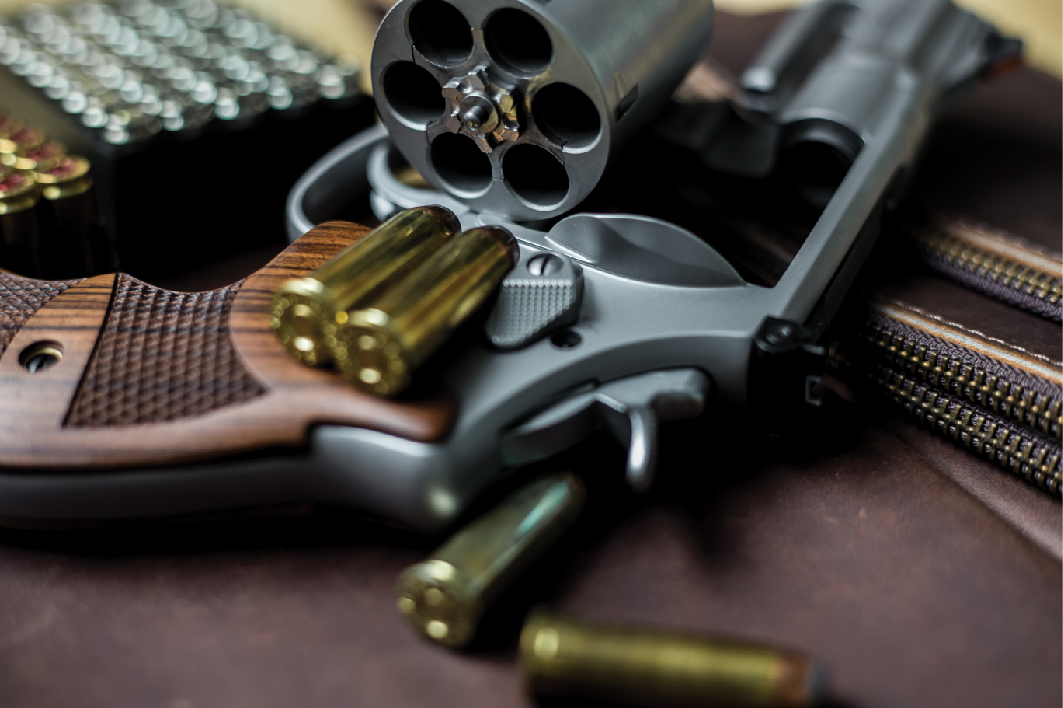Unveiling the Trajectory: Exploring Factors Affecting a Firearm’s Maximum Projectile Range
The maximum projectile range of a firearm, often referred to as its “horizontal range” or “sighting distance,” is a crucial aspect of understanding a firearm’s capabilities. It represents the farthest distance a projectile can travel before succumbing to gravity and air resistance. This article delves into the key factors that significantly impact a firearm’s maximum projectile range, empowering you with a deeper understanding of firearm ballistics.
Demystifying Ballistics: The Science of Projectile Motion
Ballistics, the science of studying projectile motion, plays a central role in understanding maximum projectile range. When a projectile is fired from a firearm, it experiences two primary forces:
- Gravity: This constant force pulls the projectile downward towards the earth.
- Air Resistance: As the projectile travels through the air, it encounters resistance, slowing its velocity over time.
The interplay between these forces dictates the projectile’s trajectory, ultimately influencing its maximum range.
Factors with a Significant Impact:
Several factors significantly impact a firearm’s maximum projectile range. Understanding these factors allows for a more informed approach to firearm selection and use:
-
Muzzle Velocity: This refers to the initial speed of the projectile as it exits the barrel. Higher muzzle velocities translate to a flatter trajectory and greater potential range before gravity and air resistance significantly impact the projectile. Barrel length influences muzzle velocity, with longer barrels generally allowing for greater propellant gas expansion and resulting in higher muzzle velocities.
-
Ballistic Coefficient (BC): This dimensionless number represents a projectile’s ability to overcome air resistance. Heavier projectiles with sleeker designs typically have higher BCs. Projectiles with higher BCs experience less drag, allowing them to retain velocity and travel farther before succumbing to air resistance.
-
Angle of Fire: The angle at which the firearm is pointed at the time of discharge significantly affects the trajectory and, consequently, the maximum range. A higher angle of fire will result in a higher initial arc, potentially reaching a greater maximum height but sacrificing horizontal distance. Conversely, a lower angle of fire translates to a flatter trajectory and a potentially longer maximum range, but with a shorter dwell time in the air and a quicker descent due to gravity.
-
Atmospheric Conditions: External factors like wind speed, air density, and temperature can significantly impact the projectile’s trajectory and maximum range. Strong headwinds will slow the projectile, reducing range, while tailwinds can extend it. Air density, influenced by altitude and temperature, also plays a role. Thinner air at higher altitudes offers less resistance, potentially increasing range.
-
Projectile Design: The shape and weight of the projectile influence its ballistic coefficient and air resistance. Heavier projectiles with streamlined designs generally experience less drag and have a longer potential range compared to lighter or less aerodynamic projectiles.
Additional Considerations:
While the factors mentioned above have the most significant impact on a firearm’s maximum projectile range, there are additional considerations:
- Rifle vs. Handgun: Rifles generally have longer barrels and higher muzzle velocities compared to handguns. This translates to a longer potential maximum range for rifles.
- Ammunition Selection: Choosing ammunition with a high muzzle velocity and a good ballistic coefficient can significantly enhance a firearm’s maximum range.
Important Note:
The maximum projectile range listed by a firearm manufacturer is often an estimate based on ideal conditions. Real-world factors like wind, air density, and shooter technique can significantly affect the actual trajectory and achieved range.
FAQ: Unveiling the Trajectory of a Projectile
- What is the most important factor affecting a firearm’s maximum range?
Muzzle velocity is arguably the most significant factor impacting a firearm’s maximum range. Higher muzzle velocities translate to a flatter trajectory and greater potential range before gravity and air resistance take hold.
- How does bullet weight affect range?
Heavier bullets generally have higher ballistic coefficients, meaning they experience less air resistance. This can translate to a longer maximum range compared to lighter bullets.
- Does barrel length always affect range?
Yes, barrel length plays a role in muzzle velocity. Longer barrels allow for greater propellant gas expansion, leading to higher muzzle velocities and potentially increased range.
- How can I estimate the actual range of my firearm?
Ballistic calculators and tables can provide a more accurate estimate of a projectile’s trajectory and maximum range based on specific ammunition, firearm characteristics, and atmospheric conditions.
- Is it important to consider maximum range when choosing a firearm?
Maximum range is one factor to consider, but it shouldn’t be the sole deciding factor. Factors like intended use, effective firing range, and handling characteristics should also be weighed when selecting a firearm.
Read more about it:https://genpromedia.com/how-to-file-chapter-13-with-no-money/






More Stories
Is there a lifetime limit on epidural steroid injection?
What is Section 20 of the Motor Accident Insurance Act (Queensland)?
Where to Watch USMNT vs Jamaica National Football Team